FENOFIBRIC ACID DELAYED-RELEASE - ORAL
PHONETIC PRONUNCIATION: (FEN-oh-FYE-brick AS-id)
COMMON BRAND NAME(S): Trilipix
GENERIC NAME(S): fenofibric acid (choline)
Uses
USES: Fenofibric acid is used along with a proper diet to help lower "bad" cholesterol and fats (such as LDL, triglycerides) and raise "good" cholesterol (HDL) in the blood. It works by increasing the natural substance (enzyme) that breaks down fats in the blood. Fenofibric acid belongs to a group of drugs known as "fibrates." Lowering triglycerides in people with very high triglyceride blood levels may decrease the risk of pancreas disease (pancreatitis). However, fenofibric acid might not lower your risk of a heart attack or stroke. Talk to your doctor about the risks and benefits of fenofibric acid. In addition to eating a proper diet (such as a low-cholesterol/low-fat diet), other lifestyle changes that may help this medication work better include exercising, losing weight if overweight, and stopping smoking. Consult your doctor for more details.
How to use FENOFIBRIC ACID DELAYED-RELEASE - ORAL
HOW TO USE: Read the Medication Guide provided by your pharmacist before you start taking fenofibric acid and each time you get a refill. If you have any questions, ask your doctor or pharmacist. Take this medication by mouth with or without food as directed by your doctor, usually once daily. Swallow the capsules whole. Do not crush or chew the capsules. Doing so can release all of the drug at once, increasing the risk of side effects. The dosage is based on your medical condition and response to treatment. If you are also taking certain other drugs to lower your cholesterol (bile acid-binding resins such as cholestyramine or colestipol), take fenofibric acid at least 1 hour before or at least 4 to 6 hours after taking these medications. These medications can bind to fenofibric acid, preventing your body from fully absorbing the drug. Take this medication regularly to get the most benefit from it. To help you remember, take it at the same time each day. Do not increase your dose or use this drug more often or for longer than prescribed. Your cholesterol/triglycerides level will not lower faster, and your risk of side effects will increase. It is important to continue taking this medication even if you feel well. Most people with high cholesterol/triglycerides do not feel sick. It is very important to continue to follow your doctor's advice about diet and exercise. It may take up to 2 months before you get the full benefit of this medication.
Side Effects
Precautions
Interactions
Overdose
Images

- color
- reddish-brown
- shape
- oblong
- imprint
- 45
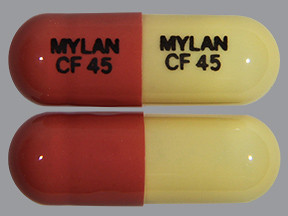
- color
- brownish-pink
- shape
- oblong
- imprint
- MYLAN CF 45, MYLAN CF 45
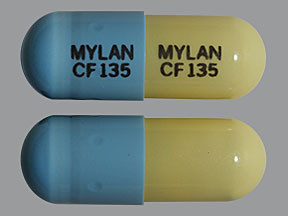
- color
- light yellow
- shape
- oblong
- imprint
- MYLAN CF 135, MYLAN CF 135
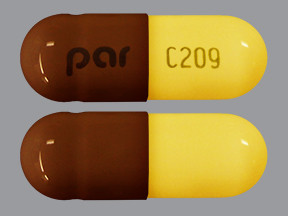
- color
- yellow
- shape
- oblong
- imprint
- par, C209
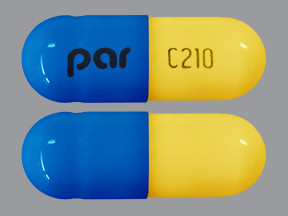
- color
- yellow
- shape
- oblong
- imprint
- par, C210
Reviews
Faq for FENOFIBRIC ACID DELAYED-RELEASE - ORAL
Fenofibric acid delayed-release is used along with a proper diet to help lower cholesterol and triglyceride levels in the blood.
Fenofibric acid delayed-release belongs to a group of medications called fibrates. It works by increasing the enzyme in the body that breaks down fats, thus reducing cholesterol and triglyceride levels.
The recommended dosage of fenofibric acid delayed-release varies depending on the patient's condition and response to treatment. It is usually taken once daily with food.
Common side effects of fenofibric acid delayed-release include stomach pain, nausea, diarrhea, joint pain, and headache. However, if any severe side effects or allergic reactions occur, it is important to seek immediate medical attention.
It is important to inform your doctor about all the medications you are currently taking before starting fenofibric acid delayed-release. Certain medications, such as blood thinners or statins, may interact with fenofibric acid and increase the risk of side effects.
Fenofibric acid delayed-release may take a few weeks to show its full benefits. It is important to continue taking the medication as prescribed by the doctor, even if you don't see immediate results.
Fenofibric acid delayed-release is not recommended during pregnancy or breastfeeding, as its safety has not been established. It is important to consult with your healthcare provider for alternatives if you are pregnant or breastfeeding.
While taking fenofibric acid delayed-release, it is recommended to follow a healthy diet low in cholesterol and saturated fats. It is advisable to consult with a healthcare professional or a registered dietitian for specific dietary recommendations.
It is not recommended to stop taking fenofibric acid delayed-release suddenly without consulting your doctor. Abruptly discontinuing the medication can cause a rebound effect, leading to increased cholesterol and triglyceride levels.
Disclaimer
IMPORTANT: HOW TO USE THIS INFORMATION: This is a summary and does NOT have all possible information about this product. This information does not assure that this product is safe, effective, or appropriate for you. This information is not individual medical advice and does not substitute for the advice of your health care professional. Always ask your health care professional for complete information about this product and your specific health needs.
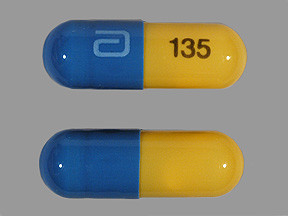
No Reviews Yet